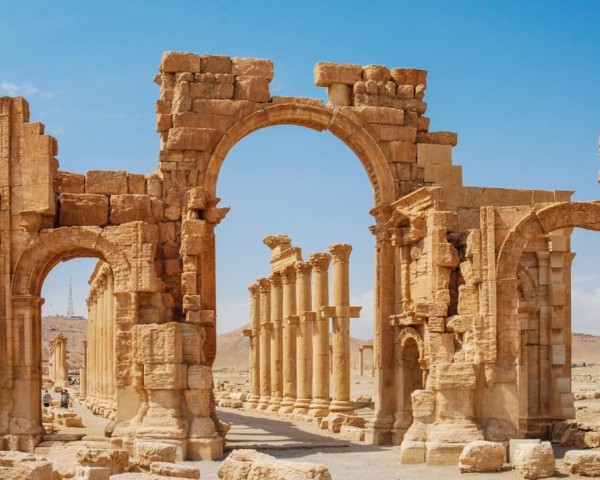Syria, having weathered more than a decade of strife, is now looking to tourism as a key element in its economic resurgence and re-engagement with the global community. The country, abundant in historical treasures, a stunning Mediterranean coastline, and largely untapped eco-tourism possibilities, seeks to regain its previous standing as a sought-after travel destination. A recent, albeit limited, easing of international sanctions, alongside local initiatives and interest from regional investors, suggests a hopeful – if still demanding – path toward Syria’s tourism getting more importance.
A Pre-War Tourism Powerhouse
Prior to the onset of the Syrian civil war in 2011, the nation saw roughly 8.5 million tourists each year, contributing around $6.3 billion in revenue, figures from the World Bank show. Famous sites such as Palmyra, the Old City of Damascus, Aleppo’s Citadel, and Busra al-Sham attracted visitors from across the globe. Experts suggest that regaining these levels could potentially inject billions into the economy over a few years, providing crucial support for post-war reconstruction. In addition to its archaeological wealth, Syria’s varying landscape – from the coasts and forests of Latakia to the striking views from Mount Qasioun – positions it as a prospective location for eco-tourism, wellness-focused retreats, and adventure experiences.
A Revised Syria’s Tourism Strategy
Syria’s ambitions for tourism go past the country’s well-known historical sites. Drawing inspiration from examples like AlUla in Saudi Arabia – an amalgam of sustainability, economic progress, and preservation – the government foresees a more diverse sector. Nature-based tourism is showing signs of progress, with local ventures such as guided hikes and family-run accommodations near Damascus gaining interest from the region. Syria’s green mountains and established natural reserves offer opportunities for health-related retreats and adventure-based travel, which complements Syria’s established cultural appeal.
Sanctions Relief Sparks Hope
In May 2025, the U.S. Department of the Treasury issued a six-month license that relaxed certain aspects of the Caesar Act, easing restrictions on particular financial dealings and removing the Central Bank of Syria from sanction lists. The EU also eased certain restrictions, opening possible investment avenues in energy, transportation, and banking. These changes have increased confidence among investors, and SunExpress Airlines, a collaborative venture between Lufthansa and Turkish Airlines, has shown interest in beginning flights to Syria, pending appropriate security and technical clearances. According to industry authority Shobokshi, Syria has significant plans to substantially involve the private sector, with tourism acting as a potential source of hard currency for the struggling economy.
Investment and Reconstruction
Restoration work is progressing at sites, such as Palmyra, which were greatly impacted by Daesh during the war. Overseen by the Directorate-General of Antiquities and Museums, these projects seek to revitalize Syria’s heritage, drawing in global tourists. Other locations, including the Citadel of Aleppo and the Citadel of the Horses, are poised to attract attention globally due to their historical importance.
Grassroots efforts are also contributing to the revitalization of communities and encouraging Syrian culture via online channels, intending to attract more than just expats and regional visitors. The Syrian diaspora, given their linguistic proficiency and understanding of different cultures, could play a critical part in rebuilding the sector, from structuring tour plans to acting as guides.
Challenges Ahead
Despite optimism, there are still hurdles. Syria’s vital infrastructure – namely hotels, rental car services, dining establishments, transport via buses, trains, and also guiding services – is in need of extensive funding to comply with global standards. Security considerations in select areas, coupled with fragile international trust, present obstacles. Humanitarian organizations emphasize that sustainable stability and updated governance are necessary for Syria’s tourism revival on a grander scale.
A Recovery Path
The Syrian pursuit of a reinvigorated tourism sector represents a daring attempt to redefine its image, from a conflict area to a destination rich in culture and natural attractions. Making use of heritage, nature, and skills of the diaspora, as well as learning from regional successes, could be the answer. Syria, much like AlUla, seeks to rejuvenate its economy and international ties. Although difficulties remain, a relaxation of sanctions coupled with increasing investor attention indicates a shift, inspiring optimism for a thriving tourism industry down the road.

